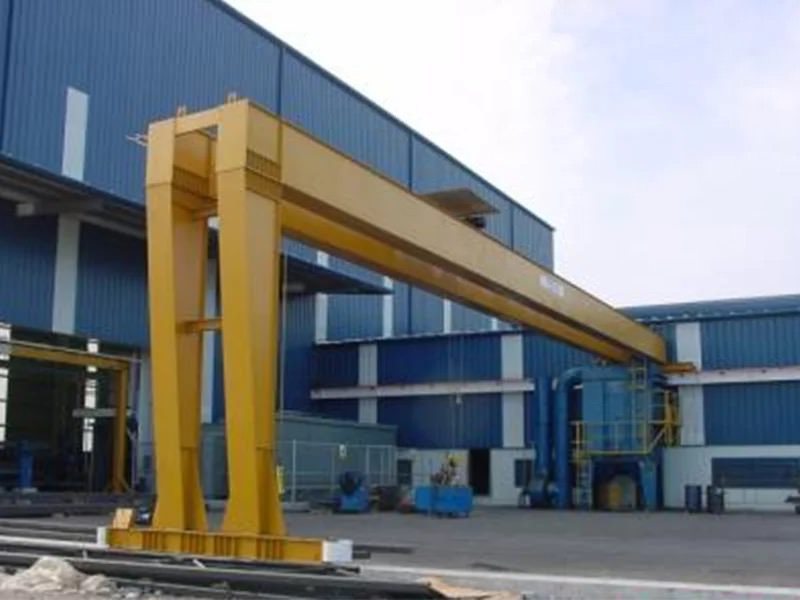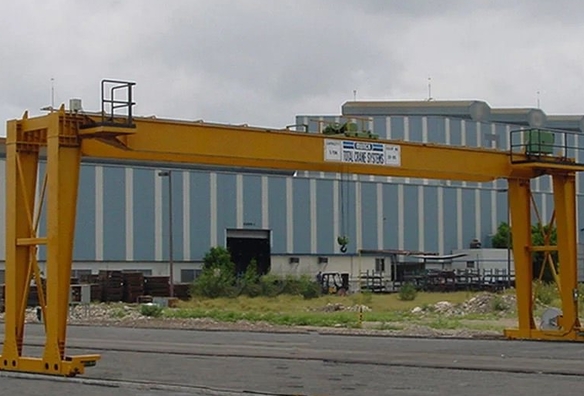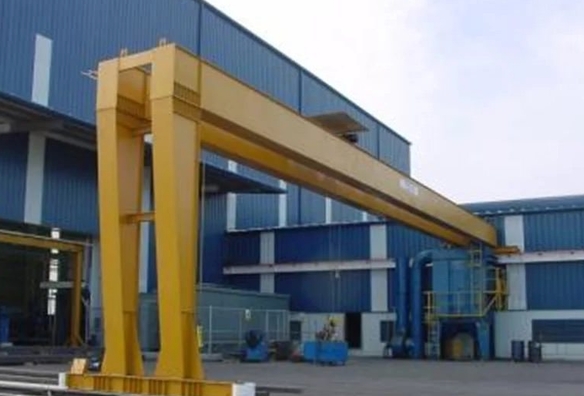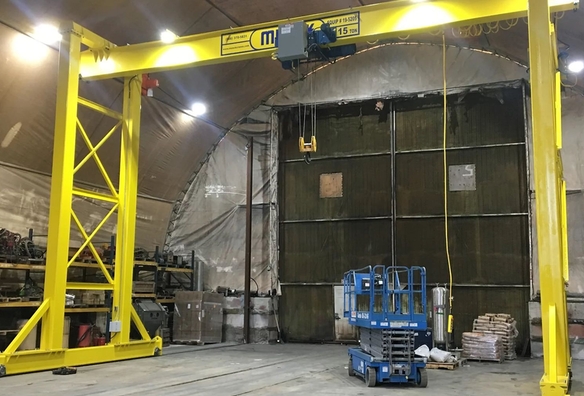

Munck Cranes is recognized as a worldwide manufacturer of heavy duty gantry cranes with a dedicated team that will help you find or create the an industrial lifting system for your specific goals. We manufacture and install gantry cranes, provide modifications to existing equipment, and put together an entirely custom-engineered solution. We will be with you throughout the process to ensure a complete solution suited to your material handling requirements is met.
Munck gantry cranes are available in a variety of configurations, including single and double girder designs, as well as portable and rail-mounted options. Our Gantry solutions, provide a durable mobile track or rail system that can handle your requirements with safety, efficiency, and reliability.
Our customers value our precision, durability, and reliability, and trust us as the single source for all their material handling equipment needs.
Gantry cranes, Semi-Gantry cranes are very effective in outdoor applications where there is no current runway structure or building to support this structure. In today's modern material handling facilities, it has also become common to see Gantry and Semi-Gantry cranes utilized for indoor applications due to a few essential factors, as defined below.
Gantry cranes are used on a variety of sites including construction sites, warehouses, manufacturing plants, rail yards, and shipping docks, where heavy lifting and precise material handling are critical to operations.
These overhead gantry cranes provide the flexibility and strength that needed to efficiently and safely move large loads and enhance productivity in demanding environments.
Whether for assembling structures, loading and unloading cargo, or managing inventory, industrial gantry cranes are an indispensable tool across numerous industrial settings.
Becoming more common are material handling facilities housed in buildings with long unsupported spans. Though this creates a challenge for a more traditional overhead crane, the spaces often have a less congested floor area, making a Gantry or Semi-Gantry crane operating directly on the floor an economical and practical material handling solution.
When using a Gantry or Semi-Gantry crane system there is no longer a need for existing beam structures, runway columns, or concrete foundations; allowing you to better control your floor layout for safety, traffic and space.
In recent years there has been a trend for smaller manufacturing business and fabrication shops to operate in leased properties such as industrial style 'mini mall' units. These types of buildings typically do not ideally support the dynamic loads that would be forced upon the structure by an overhead bridge crane, making a Gantry or Semi-Gantry crane solution an ideal fit for feasibility and cost effectiveness in material handling.
Another great feature of the Gantry or Semi-Gantry crane is portability, allowing you to relocate the entire crane with them to a new location when required. Gantry and Semi-Gantry crane systems remain a portable solution with no negative effects to the current or proposed housing location.
 A gantry crane is a complex piece of machinery composed of numerous parts. Here are some of the primary components of a gantry crane:
A gantry crane is a complex piece of machinery composed of numerous parts. Here are some of the primary components of a gantry crane:
The design and components of a crane can vary based on the specific type of gantry crane. Some gantry cranes are adjustable, portable, or fixed, and the design can vary based on the load capacity and the environment the crane is being used.



Many different type of business are now dividing their manufacturing process into 'cell process zones'. This is an increasingly popular manufacturing model that defines precise component processes as key pieces of a larger overall process, and then further designates physical zones dedicated to those smaller component processes.
An example of lean manufacturing model would have a central processing zone utilizing an overhead travelling crane with a 60-foot span. Within this zone then could also be one or many component processes requiring a crane with a 30-foot span. In this scenario a semi gantry crane would be ideally suited as one end would be free standing or self-supported, allowing the other end to utilize a single side of the existing overhead runway.
The Munck Tracker Gantry crane is readily installed on any smooth concrete floor. The floor track utilized on one side of the Tracker Crane is easily removable or expandable should it be necessary to relocate the system.
For larger applications, multiple Tracker Gantry Cranes can utilize the same track easily. Installation is simplified using the pre-engineered kit design, and the Tracker Gantry Crane arrives at its destination bolted with electrical connections pre-wired and ready to connect.
If you don't feel confident assembling the tracker yourself, your local Munck Crane Service Systems Technician is fully equipped to perform the setup safely and economically for you.
The Tracker is available in both Gantry and Semi-Gantry designs with capabilities of 1 to 5 Tons. Standard span are available up to 30 feet and lifts from 8 to 20 feet with single or two-speed motions.
The Tracker is a bold approach to material handling with safety, economy, versatility in mind.
Before You Invest in Material Handling Equipment, Talk to Munck Cranes!